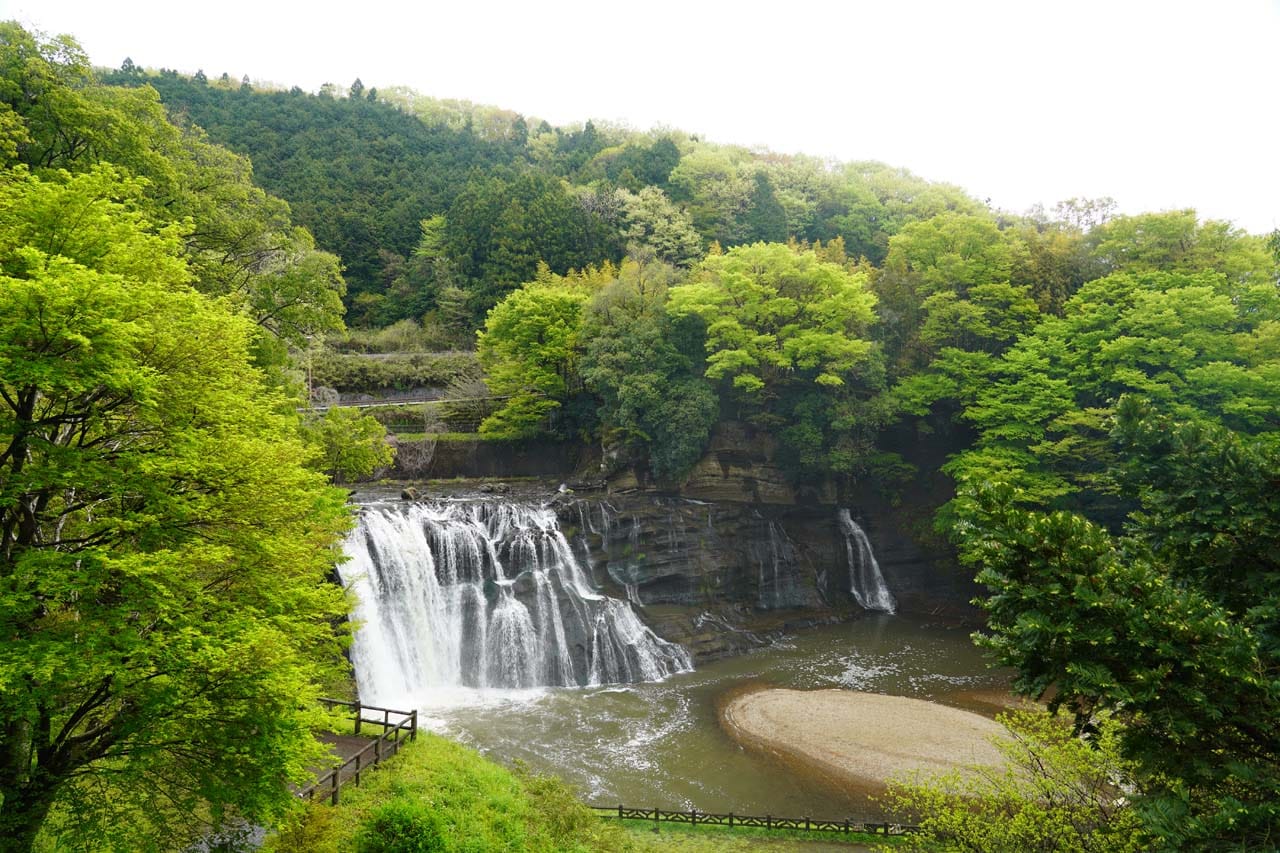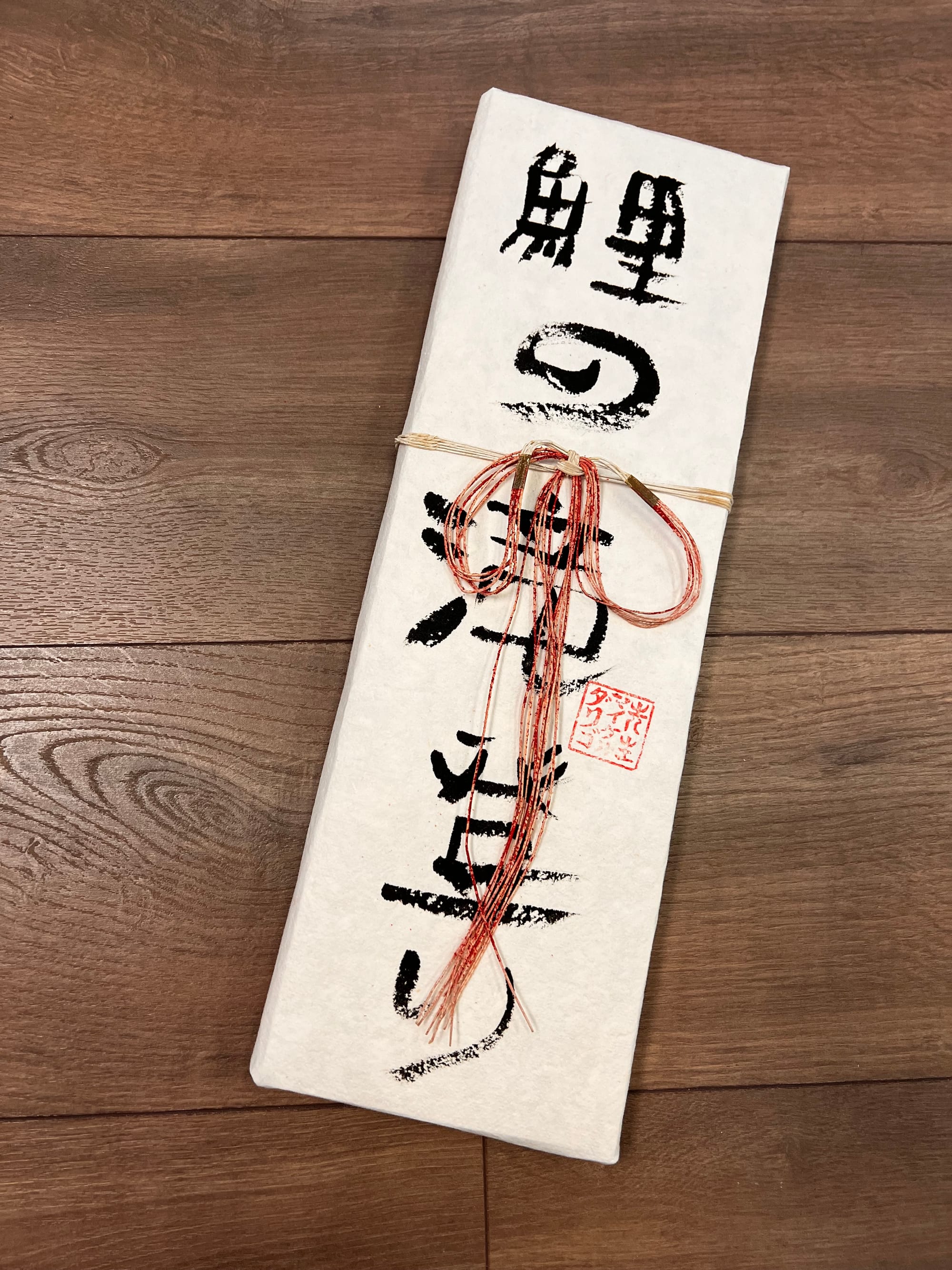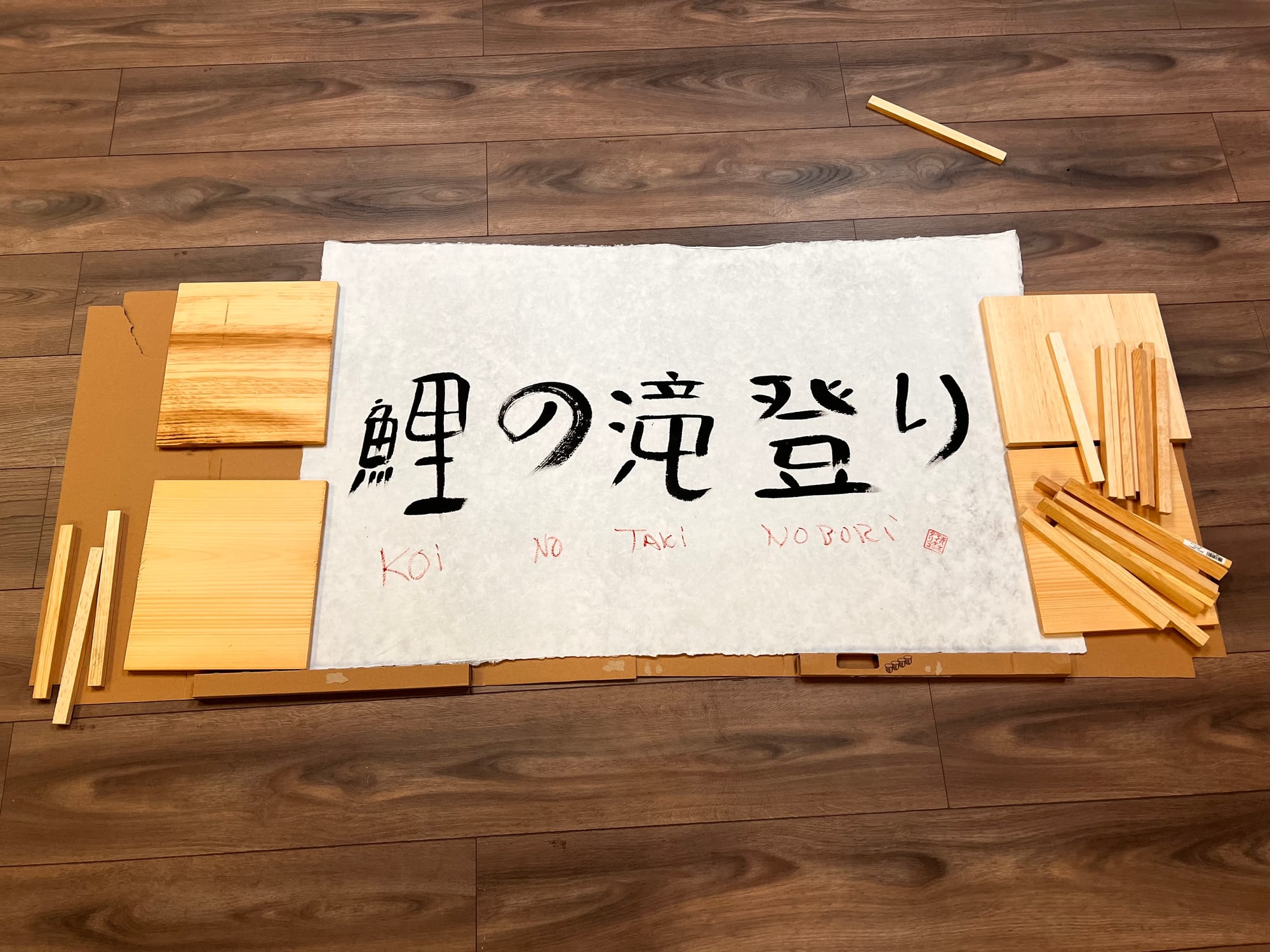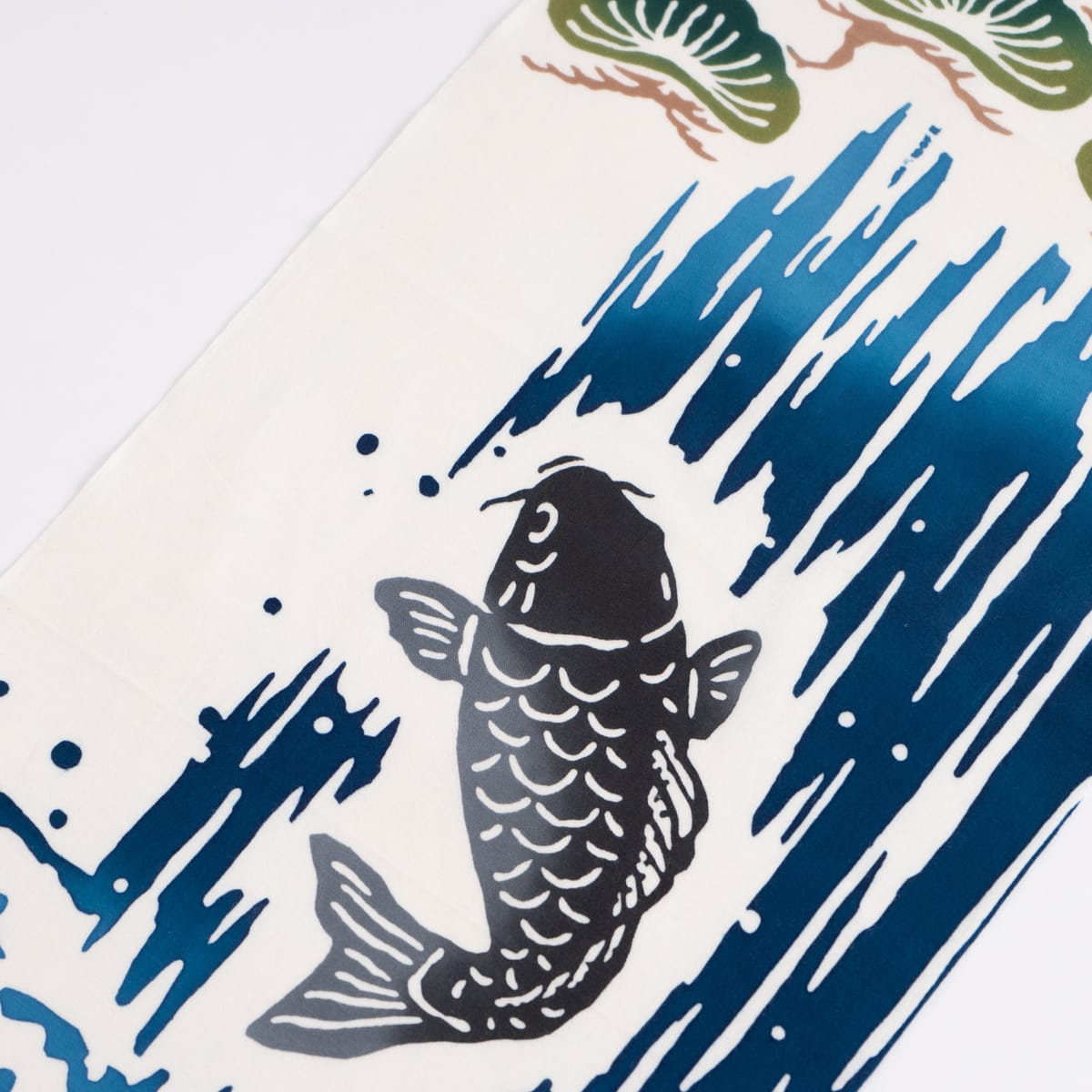Growth is integral to success. Without growth, stagnation quickly sets in, and we slide backwards and regress. People, organizations, and even societies and cultures must continue growing, or risk losing their identity.
Koi no takinobori 鯉の滝登り [pronounced “koy noh ta-key no-bore-ee”] uses the story of "the carp climbs the waterfall" to discuss and demonstrate the vital importance of growth.
We often see growth as the product of other things such as ren ma (constant improvement: read more here) and nintai (persistence: read more here). And to some extent, this is quite true. However, Koi no takinobori 鯉の滝登り really focuses on the importance of growth for its own sake, and that importance is very significant.
Carp and the Longmen Gate
The legend of the koi fish transforming into a dragon is deeply rooted in East Asian mythology, particularly in Chinese and Japanese cultures. The story symbolizes perseverance and transformation.
However, the unifying theme of this perseverance and transformation is growth.
One grows, a little and sometimes a lot, over time. And that growth drives even more growth, more transformation. Until, as the story states, the carp grows into a dragon.
As legend has it, there was a powerful waterfall located at the Dragon Gate (named Longmen – literally "dragon gate") on the Yellow River in China. The Japanese versions sometimes places the action at the top of the legendary waterfall called Ryūmon-no-taki in Japan.


Ryumon-no-taki, Japan / Longmen waterfall, China
It was believed that any koi fish that could swim upstream and leap over the top of the waterfall would be transformed into a dragon, the symbol of strength, power, and good fortune.
Koi fish are known for their resilience and ability to swim against strong currents. The journey upstream, facing various obstacles such as waterfalls and predators, symbolizes the challenges and hardships one must overcome in life to achieve greatness. The koi's transformation into a dragon at the the top of the waterfall represents the ultimate reward for perseverance and determination: growth and evolution.
In many depictions of the legend, the koi is often portrayed as a vibrant and determined fish, much like the one in the story above. The transformation into a dragon is a metaphor for personal growth, enlightenment, and the realization of one's true potential.
The legend has been embraced as a source of inspiration and encouragement in East Asian cultures, encouraging individuals to face challenges with resilience and unwavering determination, knowing that success and transformation await those who persist in their endeavors. And most importantly, that to navigate that path of success requires intense and significant growth.
Growth, not Ren Ma
Before discussing growth in the context of Koi no takinobori 鯉の滝登り, it is important to understand what it is not.
Growth isn't ren ma (constant improvement). Certainly, by focusing on constantly improving, we make incremental progress. And that progress adds up to tremendous gains.
However, this isn't the same as growth. Growth implies transformation, and this growth doesn't come about necessarily just from constantly improving.

Rather, we can think of ren ma as evolutionary change, and Koi no takinobori 鯉の滝登りas revolutionary change.
Growth as an Imperative
Why is growth so important? Simply put, we don't have a choice.
The nature of the all things – life, the universe, even our fundamental biology – is that "standing still" or maintaining an equilibrium is very difficult, requires constant input (energy, resources, attention), and is temporary.
There are really two speeds in the universe: growing and receding. We might spend some small time in a balanced state of neither, but that time is small, and generally illusory: usually when we think we're "standing still" we're actually going backwards: we just don't realize it.
This means we don't have a choice where growth is concerned. Either we grow, or we go backwards and recede.

Personal Growth
So in what ways can we grow?
The most important way is to achieve personal growth. This is deeply transformative, and has the most impact on all other aspects of our lives, and in the other areas where we can create growth.
Personal growth means transforming ourselves in a number of different dimensions. These are dimensions that are important to us: mental, physical, philosophical, even spiritual.
Examples of personal growth might include learning an entirely new skill, such as home repair or learning a new language. It can also be building a new habit such as reading a new book every week (this of course has many other benefits). It can include building new physical skills and knowledge (karatedō comes to mind, of course), and it can include reading books and listening to lectures on philosophies and perhaps even religions.
All of these have one thing in common: they make us better versions of ourselves. And in reality, they actually make us different. The person we were before we grew in those dimensions is not the same person that we are after that growth.
Like the carp, we have become a dragon.
Family Growth
Outside of ourselves, our next immediate area of growth is our family. And this is the area in which we have the most immediate influence as well.
Our families come in diffierent sizes and shapes, and they evolve over time. In fact, our role also evolves over time, as does our responsibilities. We may be a son in early age, dependent on parents; and then later, we may become a parent ourselves, and have sons and daughters. In other ways, our role may be the same: we may be an older brother throughout our lives, but perhaps our responsibilities as that older brother may evolve over time.
We can grow incredibly in those roles and responsibilities. The son that needs constant nurturing and care may one day be providing that care to his aged parents. And there is no higher calling than being a parent to sons and daughters, and to rise to that calling requires growth and evolution in ourselves.
Again, we start as the needy carp and we grow to become the important dragon, charged with the amazing responsibility of shepherding the next generation.
Organization Growth
Outside our families, the next large circle of influence and existence for us are the organizations that we play a part within. Perhaps this is a business that we've started, or perhaps we work for a large corporation. And other organizations may also be an important part of our lives, such as a dojo or a political group that we care about.
Our roles in these organizations very, of course. But regardless of those roles, the same applies to them as it does to ourselves and our families: without growth, there is backsliding. If these organizations thrive and survive, it will only be if they grow. And our roles within them is to plan, promote, and direct that growth.
Societal Growth
And finally, the greater society that we live in must also grow as well. Even simple growth, like population growth, is important. Population growth brings greater economic prosperity and a greater reach for a society. And it ensures its continued success and longevity.
Societies must also grow in other dimensions, though. And this is a huge challenge because, as history teaches us, the passage of time isn't kind to societies and nations, and at some point, tends to create backwards movement that eventually ends those entities.
The challenge, of course, is to have growth that minimizes the attendant negative consequences. Creating complex legal systems is important; but minimizing the friction and waste that those systems creates is, in some ways, even more important.
Growth by itself, and in isolation, is generally always good. But as growth applies to larger and larger entities (from small businesses, to larger corporations, to nations) the threat of negative aspects of growth looms large, and can sometimes end in a self-destructive growth.
Growth as a Goal
Growth is a g0al that we should build-in to our planning. Growth is not only necessary, but growth creates new opportunities for us. Sometimes, those opportunities aren't even revealed to us until we have sufficient growth to be ready for them.
Regardless, though, we must ensure that growth is factored into our planning so that we can be ready for it, and be ready to take advantage of it. Most of our personal planning is really planning to create the support for the growth we need to succeed.
And in fact, if we look at our list of goals and tasks, quite a few of those have to do with the steps necessary to promote the growth we need. This is normal and natural.
Growth as Velocity
Now that we understand growth, it is important to understand a vital component of growth: velocity.
Velocity is momentum. Velocity carries us forward, especially when we hit the inevitable obstacles that we might face, and especially as must consider how to overcome those challenges.
Don't underestimate the power of momentum. In fact, the concept itself is integral to karatedō – ikioi (read more here) teaches us that momentum is the secret to winning most conflicts and the underlying driving force to success.
Velocity Guarantees More Growth
Velocity has an amazing multiplicative property: the more velocity that we have, the more growth that we have.
There is a critical chain reaction that occurs with velocity. Once there is enough velocity, our growth drives more growth.
We see this all around us. Even in simple finances, we see the impact of the growth of our assets. With minimal assets, our ability to invest in ways that bring us big returns is limited. As our assets grow, more and more opportunities are available to us and those opportunities return even greater rates of growth.
As the saying goes, "the rich get richer" – this is true of more than just money. This is true of all growth.
Velocity Supports Success
More growth also acts to support the success that we already have. Remember that nothing in our universe stands still: we either are moving forward or moving backwards.
So to protect the success that we already have, we require more growth. Yes, that growth might bring us more success, but that growth also protects and supports what we've already achieved.
Growth isn't just valuable for achievement. Growth is valuable to conserve our existing achievement.
Velocity Ensures the Longevity of Success
Success, in the specific, doesn't last forever. (And would you want it to? After all, there is little challenge and sense of achievement if success is infinite.)
But if we are trying to achieve the maximum longevity for our success, we need growth.
The velocity of forward movement ensures that our success keeps growing and moving forward. We need that velocity to continue on the road to success upon which we've set out. Without it, we "run out of gas" as growth slows and halts, and we find ourselves drifting backwards.
Growth ensures that our success lasts as long as possible.
Grow, and Become the Dragon
Keep the carp in mind. They struggle and their efforts, as is natural, wax and wane. But on the whole they keep moving forward, upward. And as they do, they slowly transform. The carp at the beginning of the journey are growing into different carp, even in the earliest stages.
And as they strive through the middle of their journey of growth, they may still be carp, but they are probably not all that similar to what started the journey.
And as they finally get closer and closer to the top of the waterfall, the carp have become larger, more powerful, and .... different. They are no longer carp, but not yet dragons.
And then they find the top. They reach over the waterfall, and they find themselves dragons.
What an amazing manifestation of the power of growth.
Plan for your growth, work hard for your growth in all its dimensions, and celebrate growth.
Grow, and become the dragon.
| Kanji/Katakana | Meaning |
|---|---|
| 鯉 | carp (koi) |
| の | of (no) indicates possession |
| 滝 | waterfall (taki) |
| 登り | climbing (nobori) |
Editor's Note: This lecture was first delivered by Sensei in New York City on January 13, 2024 as the official Kagami Biraki lecture of that year. (Read more about Kagami Biraki here.)



![Ikioi — Momentum 勢い [Edition 2025]](https://images.unsplash.com/photo-1691568520168-d74572f43f62?crop=entropy&cs=tinysrgb&fit=max&fm=jpg&ixid=M3wxMTc3M3wwfDF8c2VhcmNofDYyfHxtb21lbnR1bXxlbnwwfHx8fDE3NDczNDY5MDJ8MA&ixlib=rb-4.1.0&q=80&w=720)
![Taikibansei — Great Talent, Evening Forming 大器晩成 [Edition 2025]](https://images.unsplash.com/photo-1534447677768-be436bb09401?crop=entropy&cs=tinysrgb&fit=max&fm=jpg&ixid=M3wxMTc3M3wwfDF8c2VhcmNofDIzfHxzaG9vdGluZyUyMHN0YXJ8ZW58MHx8fHwxNzQ0MTU3MTQzfDA&ixlib=rb-4.0.3&q=80&w=720)
![Gaden Insui — Pull Water to My Own Rice Paddy 我田引水 [Edition 2025]](https://images.unsplash.com/photo-1512117789060-5de1ecef9eb7?crop=entropy&cs=tinysrgb&fit=max&fm=jpg&ixid=M3wxMTc3M3wwfDF8c2VhcmNofDF8fHN0YW5kJTIwdXB8ZW58MHx8fHwxNzQzMzYwMTAzfDA&ixlib=rb-4.0.3&q=80&w=720)